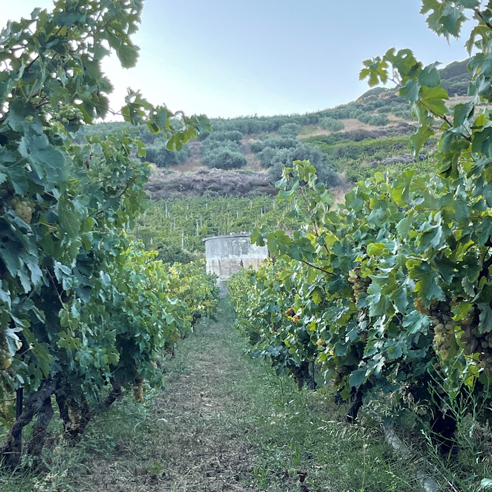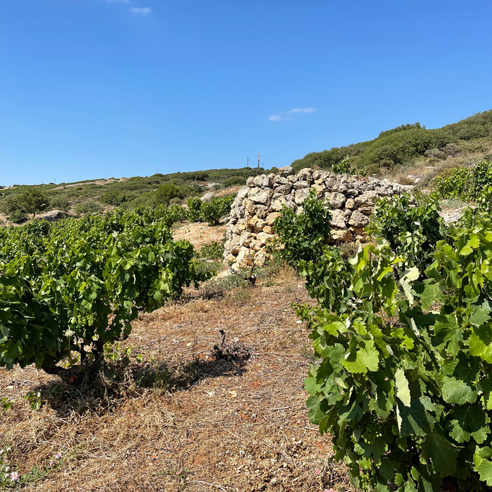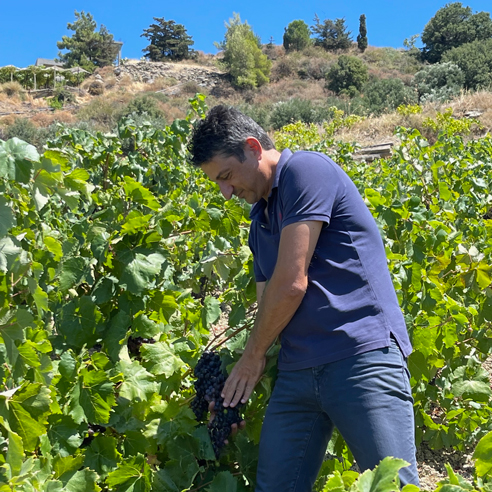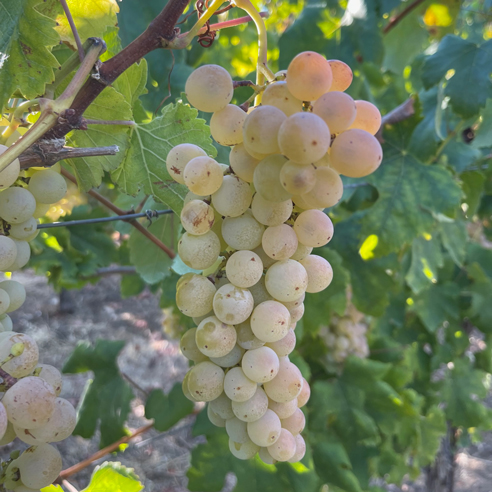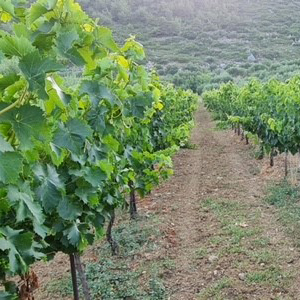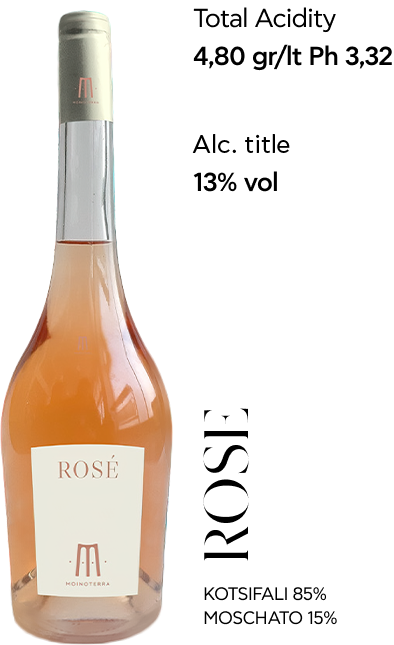WE CULTIVATE OUR OWN PHILOSOPHY OF LIFE
Preserving the Cretan identity we choose local varieties.
It is an eminently Cretan variety and the undisputed queen among the island's white grape varieties. Due to the long wine history of this glorious island, Vilana is a bridge with the archetypal white wines of ancient Crete. As for the plant, it is quite robust and lively in terms of its foliage, while it is particularly productive both in bunches and in the density of the horns they bear. Of course, it is quite sensitive. A characteristic of the variety is also the thin skin of the grape, as well as its good taste. This particular variety requires draining slopes for its cultivation. The characteristic aromas of this particular variety are citrus fruits (lemon and orange), pear, but also floral aromas, such as jasmine and herbs.
The Muscat family is one of the oldest varieties, while it is cultivated in almost all the wine regions of the world. Our Muscat takes its name from the mountain village of Spina, in the province of Selino, Chania, and is one of the most aromatic varieties of the Cretan vineyard. Its grapes are small, with small ridges and a thin golden-yellow skin, quite sensitive and therefore need special care from the viticulturist. Spina’s Muscat gives dry but also sweet wines, with intense aromas, dominated by flower blossoms, hyacinth, jasmine, gardenia, citrus fruits, peach, apricot and herbs such as chamomile. It is combined with other white varieties that are not as aromatic in a milder approach. They are eaten fresh and served at a low temperature of 9-12°C.
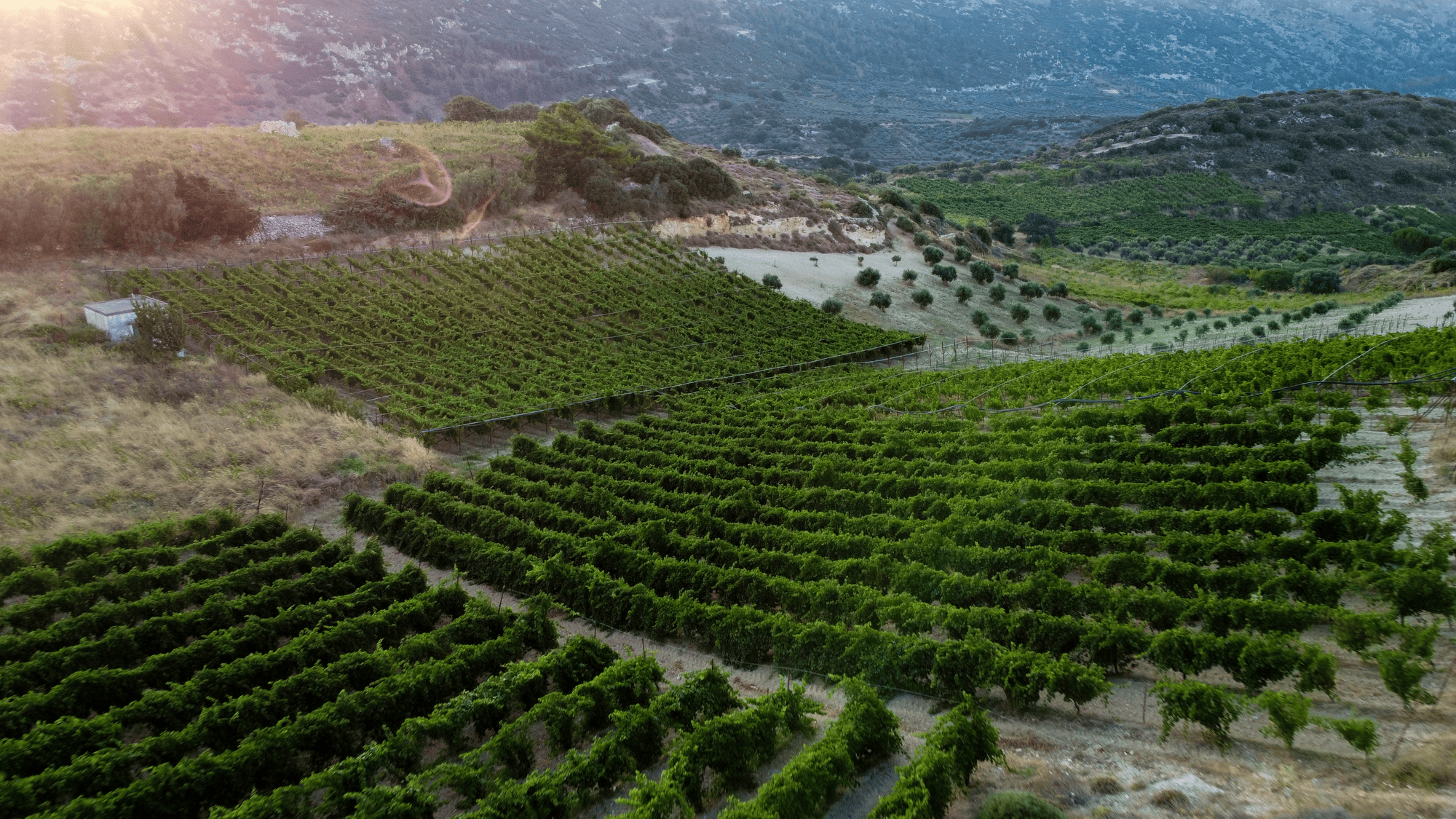
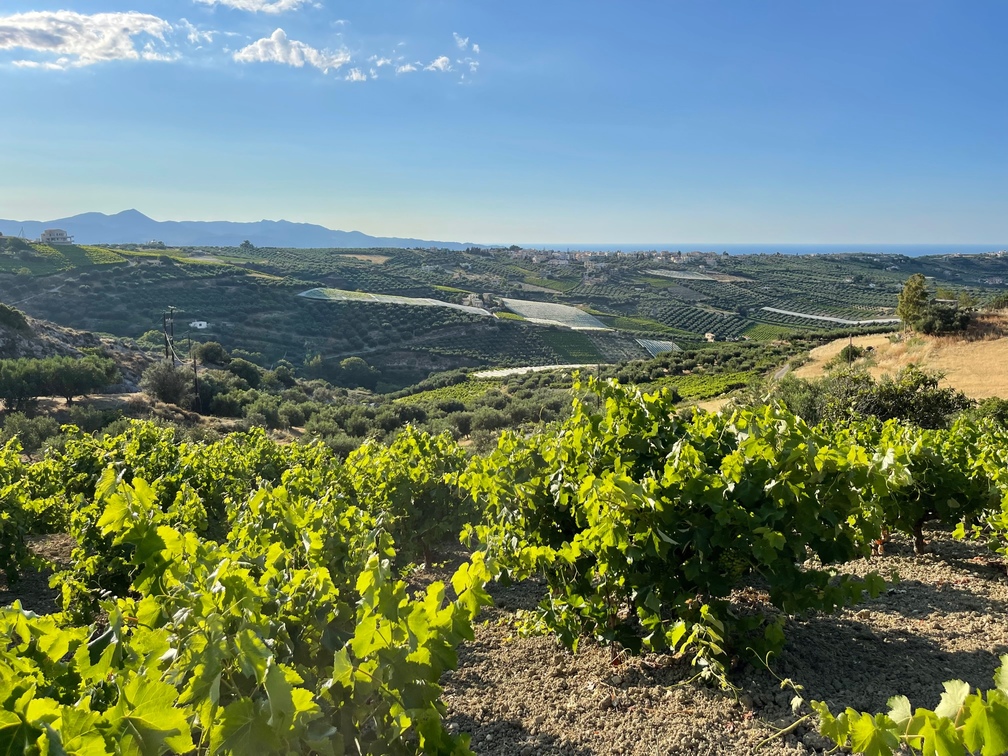
It is one of the best known island red varieties of Greece with many nicknames from place to place. Its known names are mandilari (Crete), amorgiano (Paros), black koundura (Evia) as well as pariano, vaftra. It thrives best in places with dry summers, dry soils and relatively low altitude. It is resistant to drought, but highly susceptible to botrytis, downy mildew and acid rot. That's why you need to be careful in heavy rain. As a stump it is lively and of great production. It is formed into a low cup and bilateral cord. Its flowering begins in mid-May and technological maturity in early September to early October. It is characterized by its intense and stable color, for this reason it is combined with other varieties to enhance the color of the wine produced. In addition, it gives a low alcoholic strength and moderate acidity to the wines. It has aromas of black fruit, leather and spices.
It is a red Greek variety, a landmark in the Cretan vineyard. As a stump it is lively and is formed into a low cup-shaped and linear bilateral cord. Prefers clay-limestone or gravelly soils, with good drainage. The grape is dense and conical, while the pods are round, medium in size and blue in color. It has a high alcohol content, mild tannins and acidity. Its color is soft and unstable, for this reason it is preferred to be mixed with varieties with a more intense color, more tannins and acidity, such as Mandilaria, but also to round out their astringent character. The single varietal vinifications give a transparent, tile color, aroma of red fruits mainly cherry and plum and has the possibility of a little aging. The single varietal vinifications have the possibility of developing in the bottle for 4-5 years. It participates in PDO Peza and PDO Archanes wines.
Μια γηγενής ποικιλία της Σαντορίνης καλλιεργείται στη Σαντορίνη, σποραδικά και σε άλλα νησιά άλλα και στην υπόλοιπη Ελλάδα. Είναι από τις ευγενείς ποικιλίες της χώρας και έχει πάρει τον τίτλο από ξένους δοκιμαστές της σημαντικότερης λευκής. Το Ασύρτικο έχει προκαλέσει ενδιαφέρον σε παγκόσμιο επίπεδο και για τον λόγο αυτό την τελευταία δεκαετία στην Αυστραλία και στην Καλιφόρνια έχουν αρχίσει να καλλιεργούν και να παράγουν το δικό τους κρασί από Ασύρτικο. Είναι μια πολυδύναμη ποικιλία που έχει την δυνατότητα προσαρμογής σε διάφορα οικολογικά περιβάλλοντα και για αυτό δίνει πολλούς τύπους οίνων με ιδιαίτερα ποιοτικά χαρακτηριστικά ανάλογα με την περιοχή καλλιέργειας.
Όταν οινοποιείται μόνο του δίνει ήσυχα ξηρά κρασιά είτε φρέσκα είτε και βαρελάτα, τα οποία έχουν δυνατότητα παλαίωσης, αλλά ακόμη και αφρώδη και ρετσίνες. Τα κρασιά από Ασύρτικο είτε δεξαμενής είτε βαρελιού έχουν τη δυνατότητα παλαίωσης για 5 ή για 10 χρόνια αλλάμπορεί και πολύ περισσότερο.
The fresh mineral character, intense primary fruit aromas, flint, gunpowder and the sea feel are some of the characteristics of Assyrtika. When the Assyrtiko remains on the lees, it gives off a greasy feel but also aromas of toast, vanilla, smoke and yeast. While when aged it gives notes of honey, raisins, peach jam and orange. It goes perfectly with grilled fish and seafood, shellfish, cheeses and lemony meats.
Archanes, Heraklion, Crete, 70100


